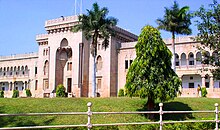Supported by the Government of India as well as the state governments, the country is home to both public and private universities. In addition, there are many private universities that are supported by different societies and bodies.
The University of Madras, established 1857, is one of the three oldest state universities in India, the others being theUniversity of Mumbai and the University of Calcutta.
Universities in India are controlled and recognized by the UGC or University Grants Commission. Over and above, there are sixteen professional councils monitoring various aspects of coordination and accreditation. Universities are judged in terms of recognition, ambience, infrastructure, placement assistance etc. Your marks are also a determining factor when it comes to seek admission in universities of India.
There are three kinds of universities that the students can opt from while planning their higher education. Universities can be divided into three categories, namely: Central, Deemed and Open universities:
1. Central Universities are the ones that are set up by the Department of Higher Education, usually through the act of the Parliament.
2. A Deemed University on the other hand has an autonomous status and is granted by the Union Human Resource Development Ministry’s Department of Higher Education. Autonomy means the university will have full freedom to chalk out its own syllabus, eligibility for admission, fees and other rules and regulations for the students.
3. Open Universities are the ones that facilitate distance learning for students. Both undergraduate as well as postgraduate degrees are offered by these universities.
2. A Deemed University on the other hand has an autonomous status and is granted by the Union Human Resource Development Ministry’s Department of Higher Education. Autonomy means the university will have full freedom to chalk out its own syllabus, eligibility for admission, fees and other rules and regulations for the students.
3. Open Universities are the ones that facilitate distance learning for students. Both undergraduate as well as postgraduate degrees are offered by these universities.




0 Reactions to this post
Add CommentEnviar um comentário